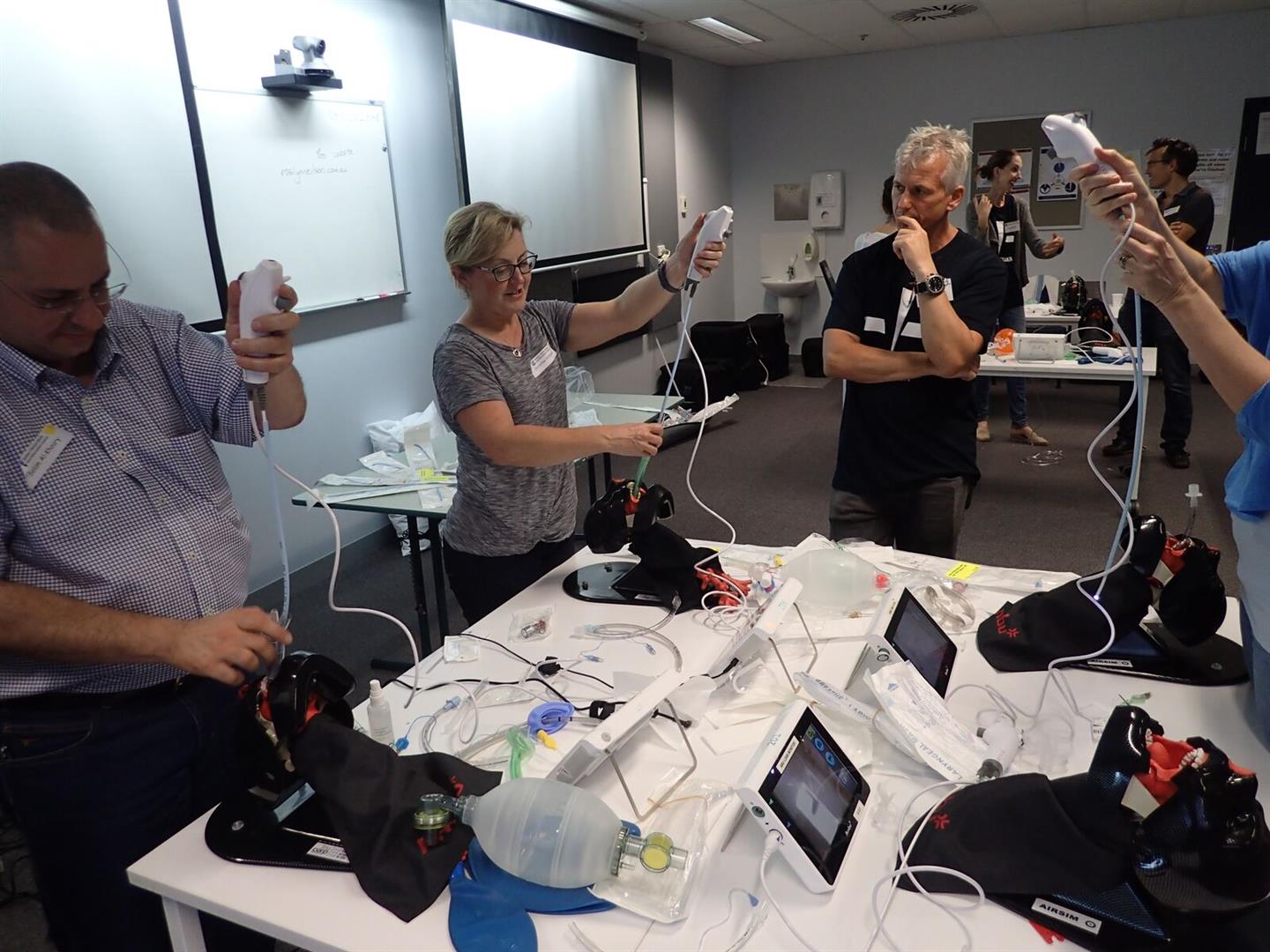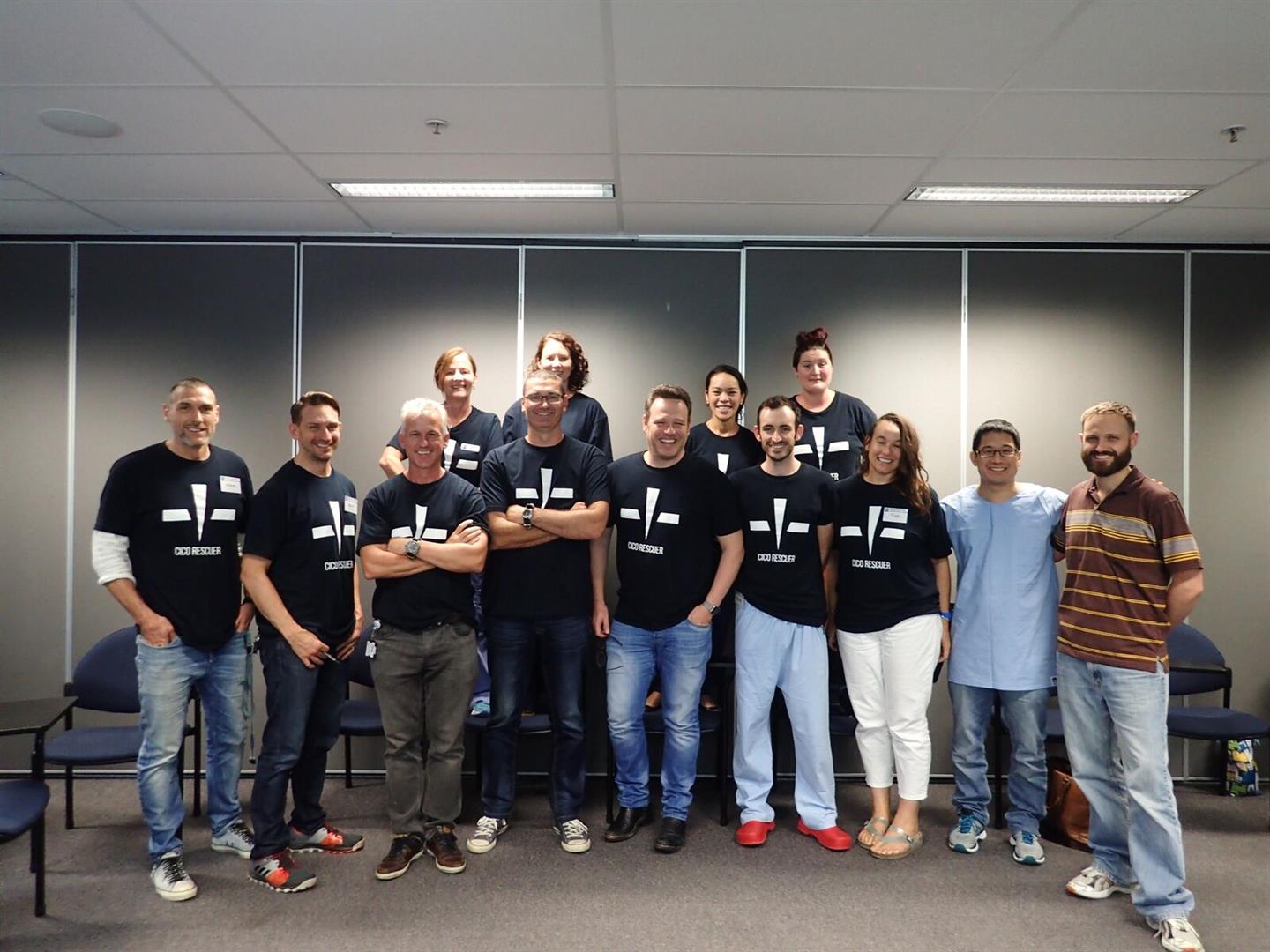New South Wales
After a successful launch in 2017 the “Advanced Technical and Teamwork Training for Anaesthetic Airway Crises” (ATTAAC) course was again run at the Sydney Clinical Skills & Simulation Centre (SCSSC) over two days in February this year. Among the many inspirations for the course, most notable were the findings of United Kingdom’s fourth National Audit Project (NAP4). This eye-opening report clearly identified human factors as a leading contributor to adverse outcomes during airway management including poor planning, failures in teamwork and communication, and a lack of familiarit y with emergency procedures and equipment.
y with emergency procedures and equipment.
Despite the increasing recognition of the impact of human factors on airway management many airway courses and workshops continue to focus exclusively on technical skill acquisition or improving familiarity with an ever-increasing array of devices. With this in mind, the team behind the ATTAAC course set about developing a curriculum that de-emphasised “playing with the toys” and instead focused on building a foundation of essential teamwork behaviours whilst integrating these with the performance of core and emerging procedural skills. With this foundation, the course then provides the opportunity to apply these in immersive difficult airway scenarios of varying degrees of acuity.
The next stage of course development involved assembling a course faculty with the appropriate mix of airway expertise and simulation experience. Senior faculty from within Sydney Clinical Skills and Simulation Centre and Royal North Shore Hospital were recruited and invitations extended to experts across the country. Ultimately the first two courses saw an instructor group drawn from New South Wales, Victoria, Queensland and Western Australia. Within this group the Airway Management SIG executive was strongly represented, including Dr Gerri Khong, Dr Linda Beckmann and Dr Tish Stefanutto as well as the co-creators of the course, Dr Adam Rehak and Dr Nick Chrimes.
The course runs over two days and is divided into management of unanticipated difficult airway (day one) and management of the anticipated difficult airway (day two). Day one focuses on providing a robust, team-oriented approach to the management of unanticipated difficulty in establishing or maintaining alveolar oxygen delivery. The utilisation of cognitive aids and effective communication to maintain a shared metal model during the process of upper airway rescue is emphasised. This helps ensure that effective transition to CICO rescue occurs when indicated. The technical skills required to implement a comprehensive CICO rescue strategy are taught and practiced on realistic, bleeding neck models.
One unique aspect of day one is a workshop focusing on recognising the opportunities presented when alveolar oxygen delivery has been re-established. Considerations influencing decision making, such as the stability of the airway, the urgency of the surgery, fasting status, are explored to determine the most appropriate way to exploit these opportunities in a particular context. Many high-profile case-reports have described adverse outcomes after advanced airway techniques or excessive attempts at intubation have been pursued while the option of simply waking the patient was never considered. As part of this approach, the technical skills to convert an airway rescued with a supraglottic airway to one with a cuffed endotracheal tube are addressed in a hands-on technical skills workshop. Day one concludes with a series of fully immersive scenarios providing the opportunity to practice effective communication, teamwork, decision-making and implementation of technical skills under realistic conditions.
The emphasis of day two is management of patients with known or predicted difficult airways or presenting in extremis - the “threatened airway”. The foundation skills for this day consist of a decision-making matrix based around the urgency and anatomical location of the problem, the technical skills to perform awake intubation with either a bronchoscope or a videolaryngoscope, and a familiarity with the theory and practice of extending the safe apnoea time through pre-oxygenation, apnoeic oxygenation, and THRIVE. The afternoon of day two involves a series of immersive team-based scenarios involving airway trauma, infection and the time-critical management of a patient with a known or predicted airway difficulty. These are specifically designed to encourage integration of all the skills developed over both days of course such that the participants leave the course with a structured approach and the necessary technical and teamwork skills to approach a wide variety of airway challenges.
The next course will be held at the Sydney Clinical Skills and Simulation Centre, at Royal North Shore Hospital, on September 14-15, 2018. Enquiries to NSLHD-SMSC or to the course coordinator Adam Rehak.


